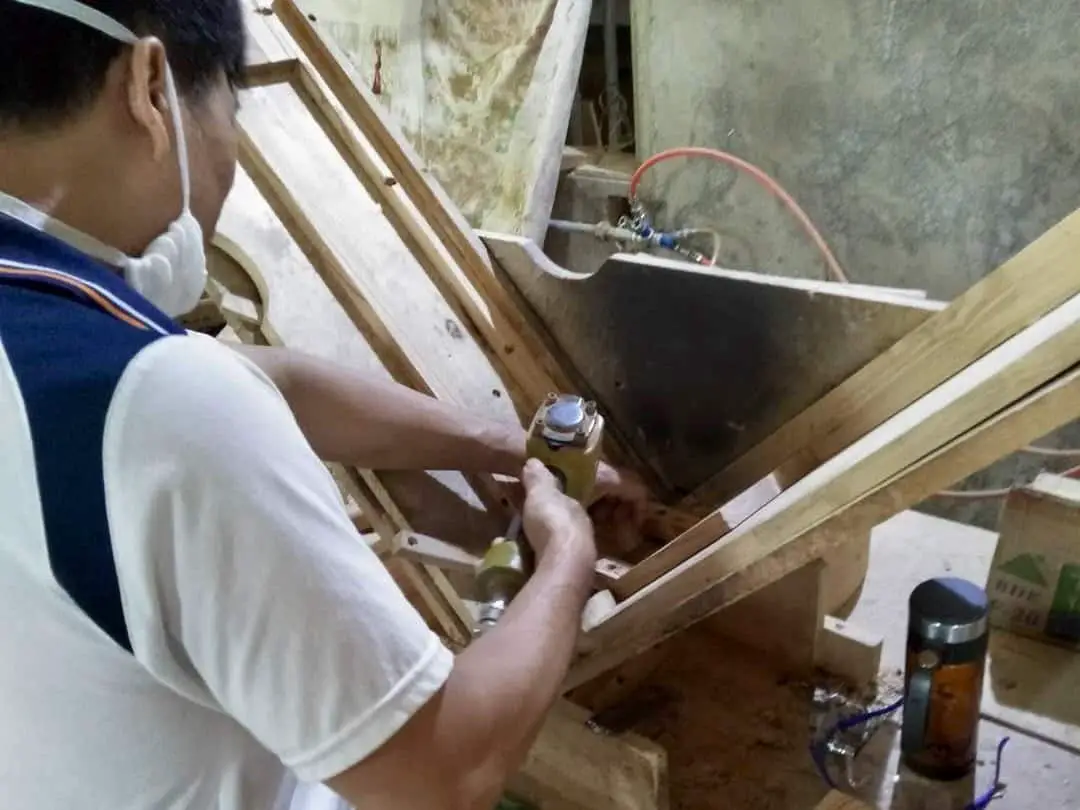Solid wood is a material that has been used to make furniture for centuries. But if you are looking for solid wood furniture manufacturers, there are some questions that you should ask the factory. Most of these questions have to do with how they are able to control the wood and wood moisture in their facilities.
One of the things we look at when we go into a new solid wood furniture manufacturer is if they have in-house kiln wood drying. We also like to know if they understand how to join the wood and have the equipment to join the wood properly. Also, if the manufacturer is in a hot and tropical climate, if they have a dry room to help control the wood moisture levels. We like to work with factories that cut and shape all the wood and have in-house finishing facilities.
Table of Contents
- Top 5 Essential Inquiries for Choosing a Solid Wood Furniture Manufacturer
- Frequently Asked Questions
- Related Questions
Top 5 Essential Inquiries for Choosing a Solid Wood Furniture Manufacturer
Solid wood, a timeless and durable material, has been a staple in furniture making for generations. When selecting a manufacturer for solid wood furniture, it’s crucial to ask the right questions to ensure quality and craftsmanship. These inquiries primarily revolve around the manufacturer’s ability to manage wood and its moisture content, which is vital for the longevity and aesthetics of the furniture.
Key aspects to consider include the presence of in-house kiln wood drying, expertise in wood joining techniques, appropriate equipment, and measures to control wood moisture, especially in hot, tropical climates.
Additionally, preference is given to manufacturers who handle the entire process, from wood cutting and shaping to finishing, within their facilities. Read on to guide you through these critical considerations for making an informed decision.
Does the Factory Have a Wood Kiln?
One of the most important things that we will look at when we are considering solid wood manufacturers is to see if the factory has any in-house wood kiln-drying facilities. This, of course, is best if they have the facilities to dry the wood right on site.
Here are the reasons why we are looking to see a kiln on-site:
- Control of Wood Moisture – If they have a facility on-site, especially in a tropical location as South China, Vietnam, or the Philippines, it helps with the control of the wood moisture levels.
- They Control the Moisture Level – An in-house wood kiln also means that they control the moisture level of the wood. It is in their interest to make sure the wood is dried to the appropriate level.
- Understanding of Moisture – If they have the wood kiln drying machines on-site it also shows me that the factory has the knowledge of wood drying and how the wood should be dried.
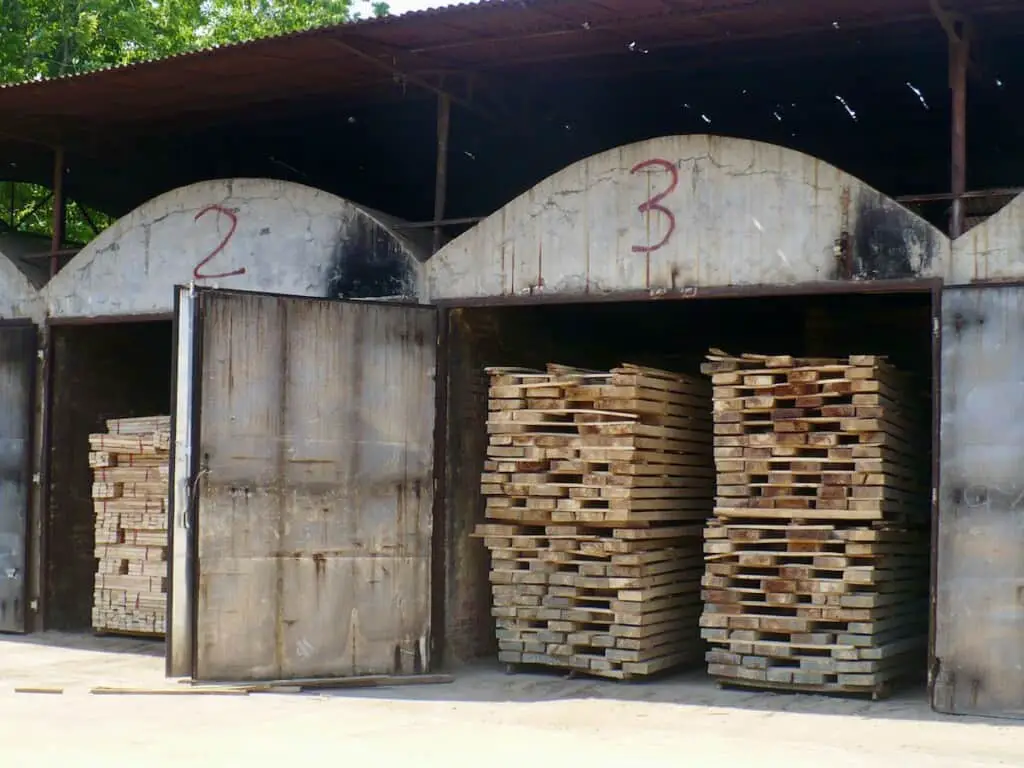
Some factories may not have all the kiln wood drying on-site, and that is OK, but if you do not see any kilns or if you take a factory tour and do not see the kilns, then you need to ask them where do they get their kiln-dried wood from and how do they control the wood moisture. This is an essential and key question when you are manufacturing solid wood furniture.
Controlling the wood moisture is one of the most important things that any solid wood factory must do. If they cannot or do not really understand how to control the wood moisture, there is a very good chance the wood pieces will crack.
Does the Factory Know How To Join the Wood?
Next to controlling the wood moisture, you also want to ensure they know how to join the wood together properly. Most solid wood will need to be joined together. There are several ways it can be joined, but some of the more common ones are:
Finger Joint Joining
The Finger joint is where the wood is sliced so that it joins like two sets of fingers put together. This kind of joining is also known as a comb joint. To do a finger joint, the factory must have the machines to make this kind of joining of the wood.
The reason they do this kind of joining is because it is usually much stronger than butt joints. The advantage is that with a finger joint, you have a very strong bond that will strengthen the wood itself.
The disadvantage is, that depending on your finish, the finger joint can sometimes show on the surface of the furniture. This could hurt the design of your overall piece.
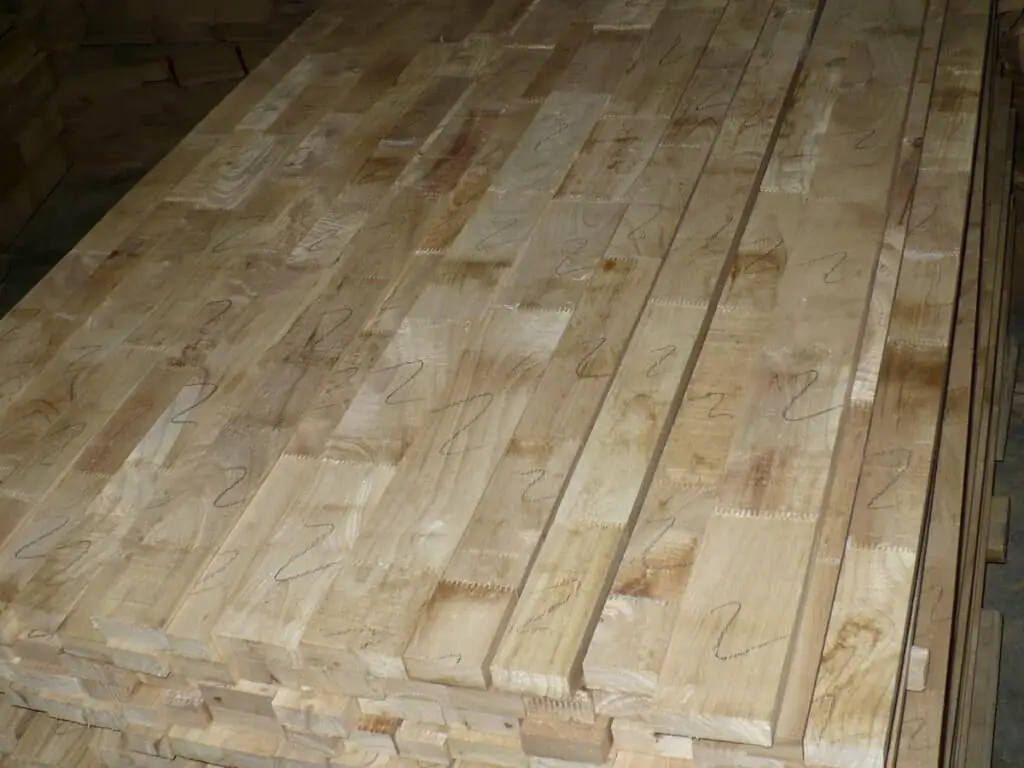
Butt Joint Joining
A butt joint in wood joining is when two pieces of material are joined by simply placing their ends together. In this case, the ends are both flat surfaces, and glue is used to join them together.
The butt joint is the simplest way to join wood together, but it is also the weakest as the joint will depend mainly on the glue to hold it together. So that is why there are different types of butt joints:
- Nailed butt joints – A small nail is used together with the glue. This kind of nail butt joint is not used so much in furniture making.
- Dowel butt joint – This is where a simple dowel is made and then glue is applied to the dowel. The dowel helps to strengthen the joint.
- Biscuit Butt Joint – This is a fairly new kind of construction. A small wooden disk, which is many times out of birch wood, is placed and glued between the wood pieces.
- Screw Butt Joints – There are several types of butt joints that also use screws in them to join the wood together.
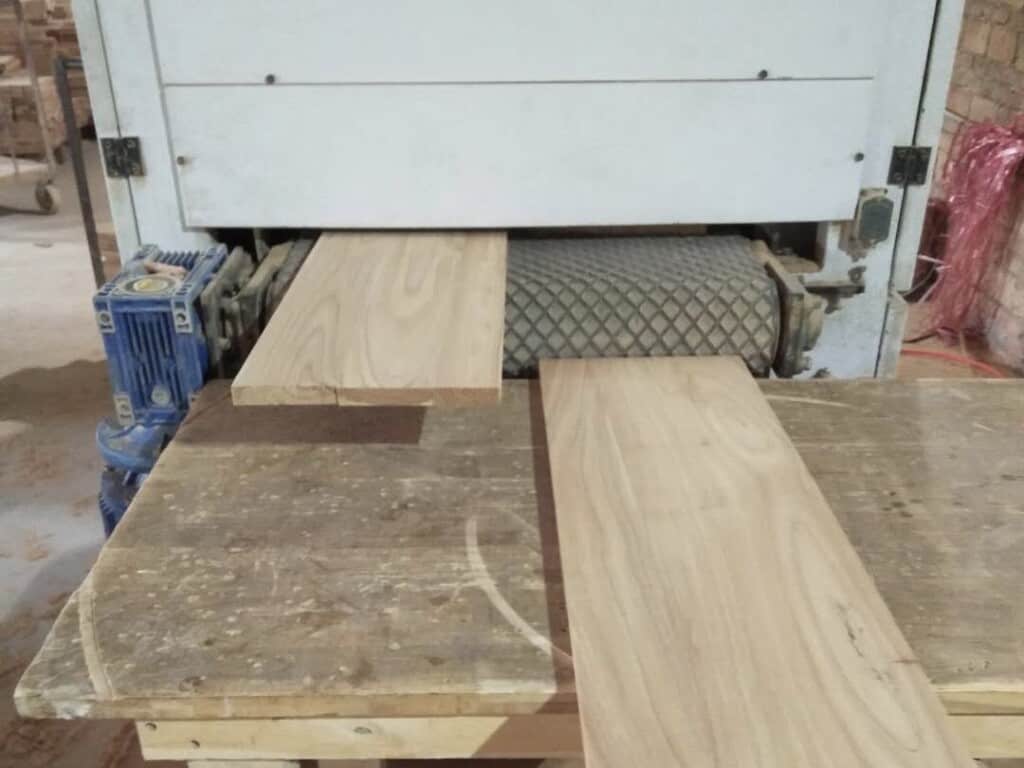
Does the Factory Have a Dry Room?
A dry room is not the same as a kiln but is a room that was set up as a temperature control room. This room will usually have limited humidity and moisture to stabilize the wood.
A dry room is significant if you are producing furniture in a tropical climate that has a lot of humidity and moisture in the air. Moisture can and will get into the wood once the wood is kiln-dried.
A dry room will ensure that the raw wood furniture pieces can be put into a stable environment and the moisture can be removed from them again until their moisture level is steady.
Does the Factory Cut and Shape All the Wood Themselves?
We like to work with solid wood factories that shape and cut all their wood pieces and do not have others do it. Some factories may send some out, but if they are doing the majority in-house this helps you and your inspectors to clearly see the entire manufacturing and production process.
Also, if they do all their own shaping in-house, then if there are any issues or problems, you can quickly find a way to solve or change them. It is much harder to do this if you have to wait for someone to change something in another town or even province.
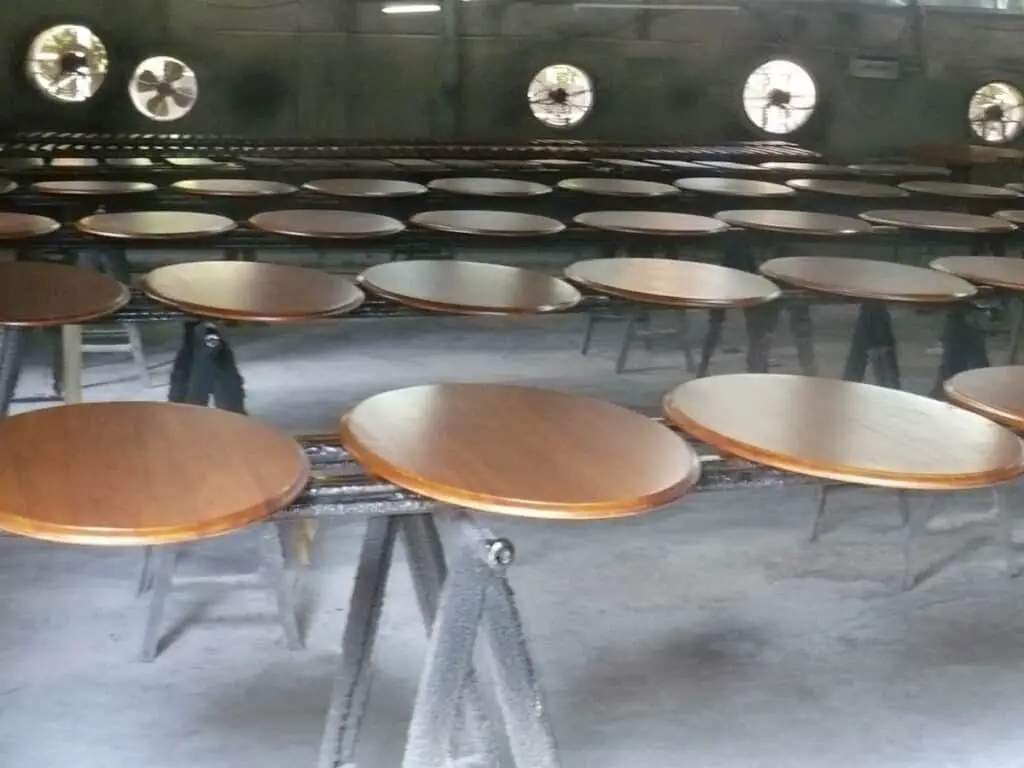
Does the Factory Have Their In-House Finishing?
One of the most important things to consider in solid wood furniture manufacturing is if the facility has its in-house finishing. This is very important as finishing is the last step before packing the furniture pieces, and you do not want to have the finished pieces be moving all over the place before packing.
Also, if a furniture finish is not quite right, you can usually correct it at the factory and get it right as long as the factory does all their in-house finishing. If they do not, then this is much harder.
Solid wood is a fabulous material for home furniture items, but manufacturing a solid piece of furniture is also quite complicated. If you can go into a factory ask them these questions and make sure they have the correct equipment and facilities, this will help ensure they can produce the quality solid wood furniture that you need.
Find out more about how Mondoro can help you create, develop, and manufacture excellent home decor and home furniture products – don’t hesitate to contact me, Anita. Check out my email by clicking here or become a part of our community and join our newsletter by clicking here.
Mondoro gives out a FREE Lookbook to anyone interested. You can receive a copy of our latest Lookbook by clicking here.
Listen to our Podcast called Global Trade Gal. You can find it on all major podcast platforms. Try out to listen to one of our podcasts by clicking here.
Subscribe to our Mondoro Company Limited YouTube Channel filled with great videos and information by clicking here.
Frequently Asked Questions
Why is in-house kiln wood drying important for a solid wood furniture manufacturer?
In-house kiln wood drying is crucial for ensuring the stability and quality of the wood used in furniture. It helps control moisture levels, preventing warping and ensuring the longevity of the furniture.
How does proper wood joining contribute to the quality of solid wood furniture?
Proper wood joining techniques are essential for creating durable and long-lasting furniture. Ask about the manufacturer’s expertise in joining methods to ensure the structural integrity of the pieces.
Why is it important for a manufacturer in a hot and tropical climate to have a dry room for controlling wood moisture levels?
Hot and tropical climates can lead to higher humidity levels, impacting the wood’s moisture content. A dry room helps mitigate this, ensuring that the wood remains stable and prevents issues like swelling or shrinkage.
What role does in-house wood cutting and shaping play in the manufacturing process?
In-house wood cutting and shaping facilities indicate that the manufacturer has control over the entire production process. This can result in more consistent and high-quality furniture, as it allows for better oversight and customization.
Why is having in-house finishing facilities a desirable feature in a solid wood furniture manufacturer?
In-house finishing facilities provide the manufacturer with control over the final appearance and quality of the furniture. It ensures that the finishing process aligns with the overall craftsmanship and standards of the brand.
How does the choice of wood species impact the quality of solid wood furniture?
Different wood species have varying characteristics, affecting the furniture’s durability, appearance, and price. Understanding the manufacturer’s selection of wood species can give insights into the overall quality and style of their products.
What quality control measures does the manufacturer have in place during the production process?
Quality control is crucial for ensuring that each piece of furniture meets the desired standards. Inquire about the manufacturer’s quality control measures, inspections, and testing procedures.
What quality control measures does the manufacturer have in place during the production process?
Quality control is crucial for ensuring that each piece of furniture meets the desired standards. Inquire about the manufacturer’s quality control measures, inspections, and testing procedures.
Can the manufacturer provide references or examples of their previous projects?
Reviewing past projects can give you a better understanding of the manufacturer’s capabilities and the quality of their work. Requesting references or seeing a portfolio can help you make an informed decision.
How does the manufacturer address environmental sustainability in their production practices?
Understanding the manufacturer’s commitment to sustainable and eco-friendly practices is important for those who prioritize environmentally conscious choices. Inquire about their sourcing of wood, waste management, and any certifications related to sustainability.
What is the warranty and after-sales support offered by the solid wood furniture manufacturer?
A warranty and reliable after-sales support indicate the manufacturer’s confidence in their products and commitment to customer satisfaction. Clarify the terms of the warranty and inquire about the available support in case issues arise post-purchase.
Related Questions
What is Solid Wood?
Solid wood furniture is manufactured from lumber directly from trees. The wood is cut, treated, kiln-dried, and then shaped to manufacture the furniture. No two pieces of solid wood furniture are exactly the same; the wood will have different natural grains, knots, and other characteristics that are similar but not 100% the same.
You can discover more by reading our blog on All About Solid Wood Furniture by clicking here.
What is Recycled Pine Furniture?
Reclaimed and recycled wood may seem to be the same thing, but they are not exactly the same, even though they are both solid wood. Recycled wood is wood that would have otherwise been discarded or not used. Wood is a naturally sustainable as material as it can be regrown and replaced. There are a variety of furniture shapes and styles that can be used to make recycled pine furniture.
You can find out more by reading our blog Recycled Pine Furniture, What You Need to Know by clicking here.

